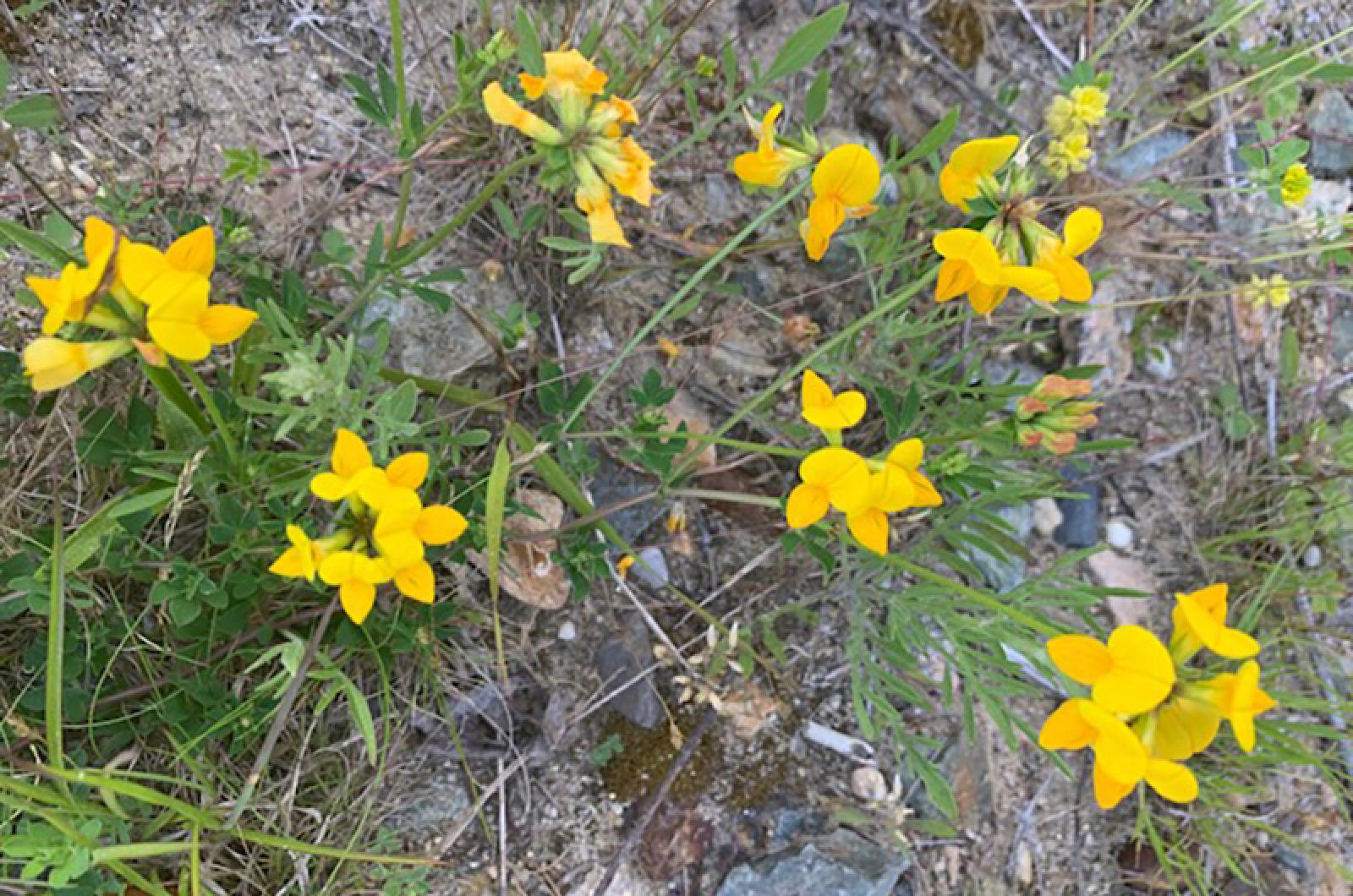Most of us have been called worse at one time or another but, even for a lowly, humble plant, some of its names and descriptors seem a bit insulting.
This plant’s names are suggestive—and not in a complimentary way. Granny’s toenails, devil’s fingers, crow’s toes, sheep’s foot and bastard indigo are just a few. It also has a nondescript agricultural designation, “non-bloating legume,” that emphasizes a lack of distinction.
These evocative portrayals apparently aim to describe a flower that is actually small, sweet and sunny. Those tags (and its most common name, bird’s-foot trefoil) describe the claw-like look of the seed pods on the plant’s stalk. Those will appear very soon in this season if these flowers are in your area.
Regardless of the negative nellies, bird’s-foot trefoil is a very pretty little plant. Those who appreciate its assets use other aliases including ladies’ fingers, God almighty’s flower, ladies slippers (no, not the one you are thinking of) or bird’s eye. Gastronomes suggest these names: butter and eggs, hen and chickens, eggs and bacon – which pay homage to its bold golden color and reddish buds.
In fact, there are even more names for this plant. Resources suggest that seventy pseudonyms have been identified for this plant that has little other accolades.
Though a member of the pea family, the edibility rating of bird’s-foot trefoil is very low, due to the fact that it is poisonous, containing hydrogen cyanide.
Alternatively (and perhaps dangerously), some medicinal benefits are attributed to its use in small amounts, due to the same poison compound. Limited treatments of hydrogen cyanide have been offered (though don’t try to prove this!) to “stimulate respiration and improve digestion, and benefit in the treatment of cancer.” The source goes on to advise, “in excess, however, it can cause respiratory failure and even death.” Enough said for my low-risk lifestyle.
Found along roadsides, in fields and among grasses in lawns, bird’s-foot trefoil hails from Europe and has shown itself to be invasive in some habitats. Used as forage for livestock (especially sheep and cow, whose systems find it both palatable and flatulence-reducing) and to control wind and water erosion, this little lady spreads on its own and beyond its intended agricultural uses and borders.
In many places, this plant becomes aggressive, creating a monoculture and reducing the prevalence of other species. Select wildlife may benefit from it, including bees (both native and nonnative, since it is mentioned as a honey plant). Some European caterpillars use it as a larval food and it can provide cover for some birds. Hunting clubs and fields managed for game welcome the species and it is still regularly employed in some applications in some parts of the country due to its agricultural and commercial suitability.
An outsider, perhaps, both geographically and botanically, this “non-bloating legume” has established itself to a remarkable degree – in our environment, language and pharmacopeia. Like many other visitors to the Vineyard, it has dug in and made the Island its home.
Suzan Bellincampi is director of the Felix Neck Wildlife Sanctuary in Edgartown, and author of Martha’s Vineyard: A Field Guide to Island Nature and The Nature of Martha’s Vineyard.







Comments
Comment policy »